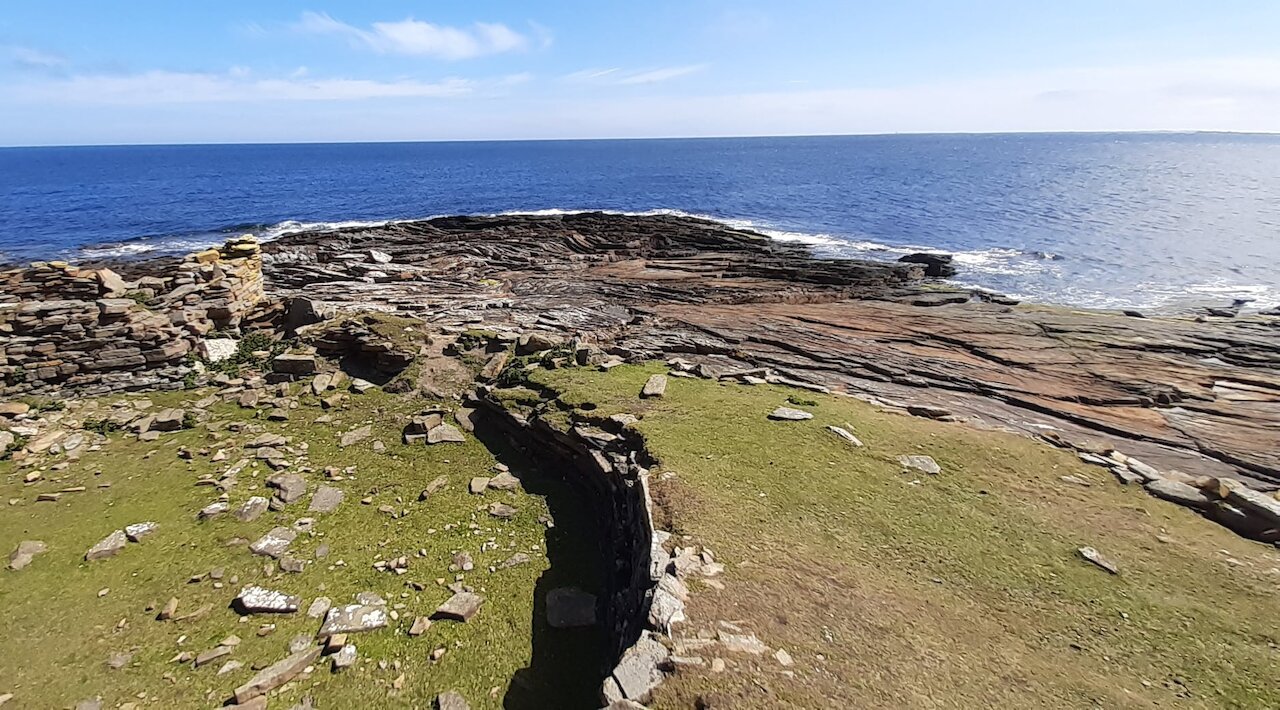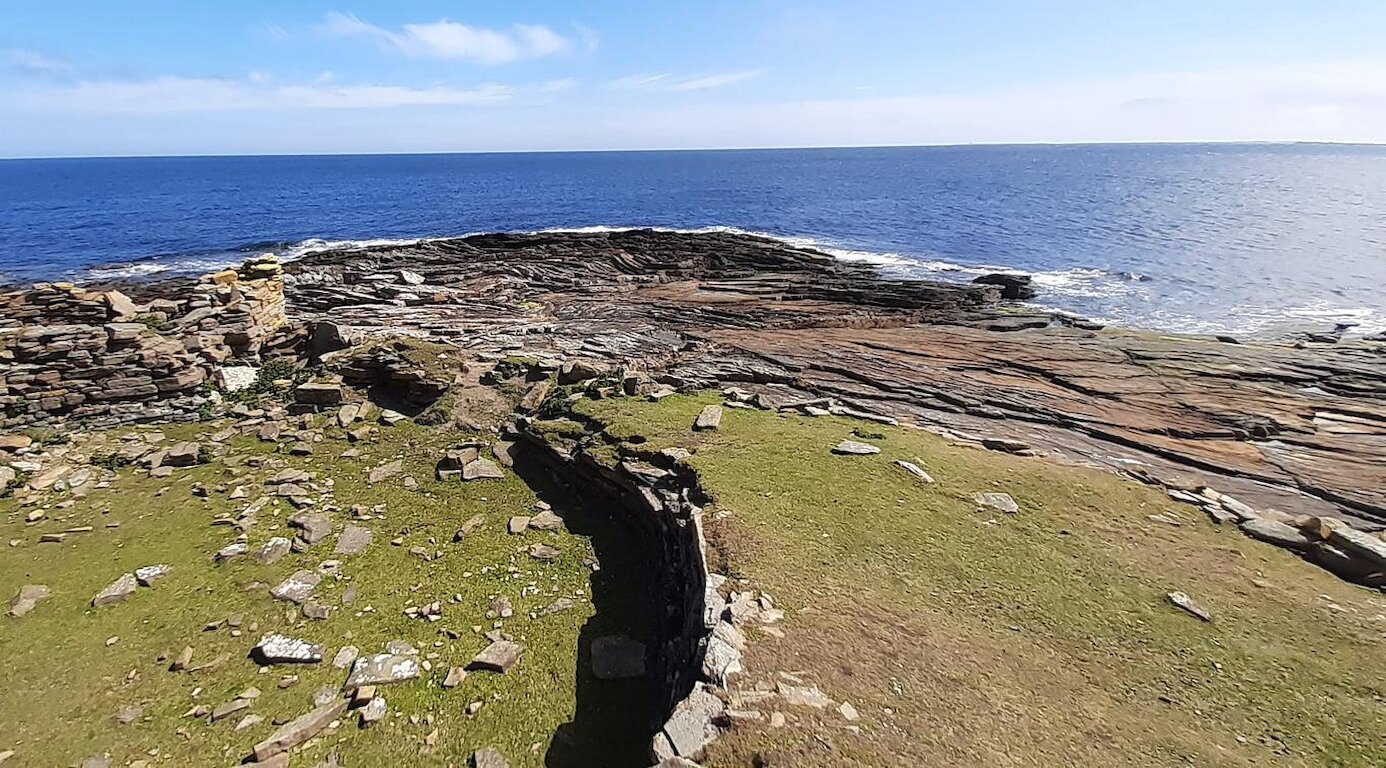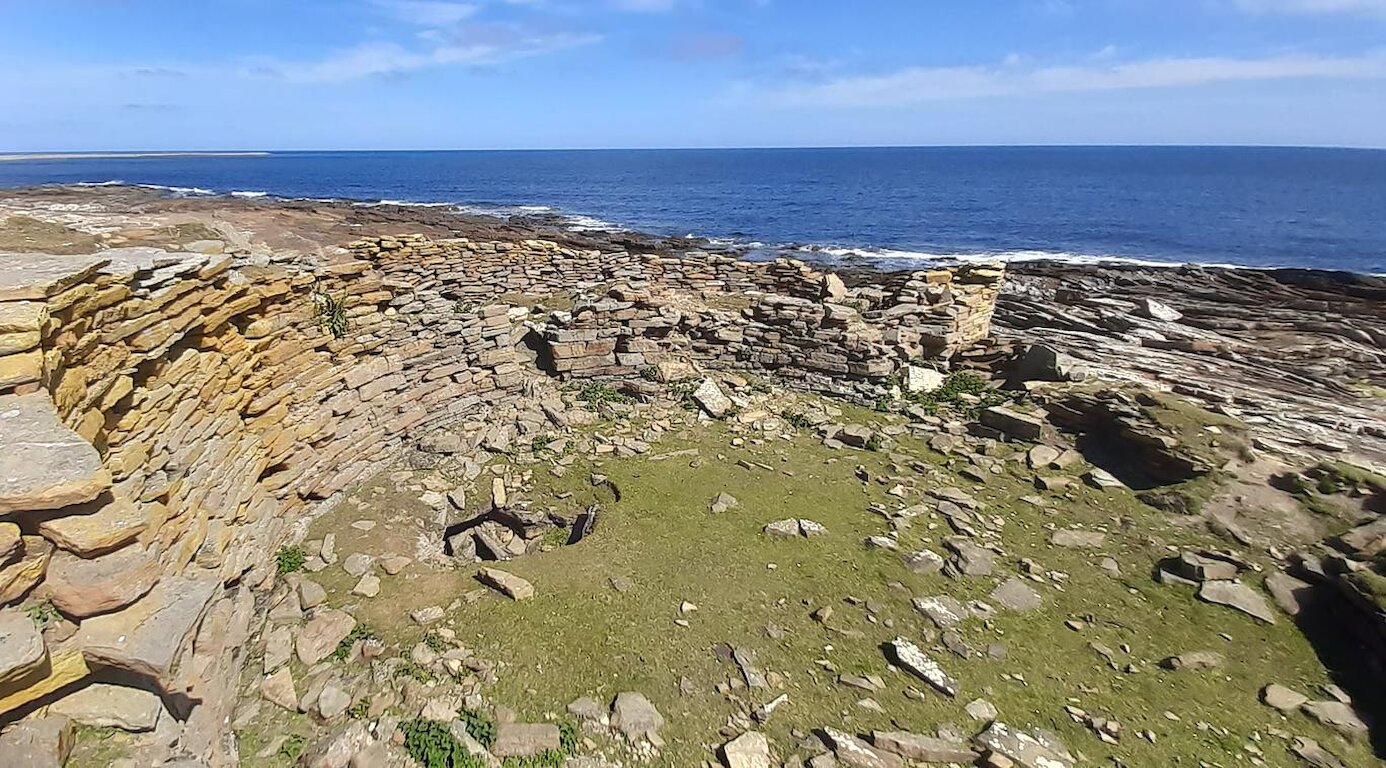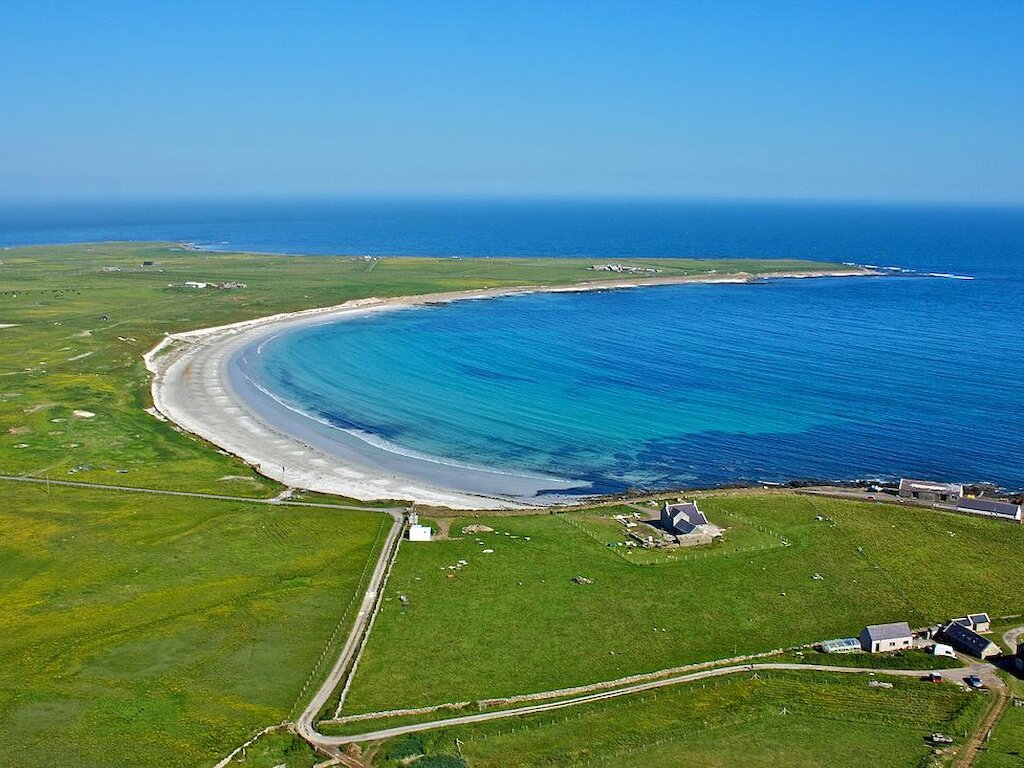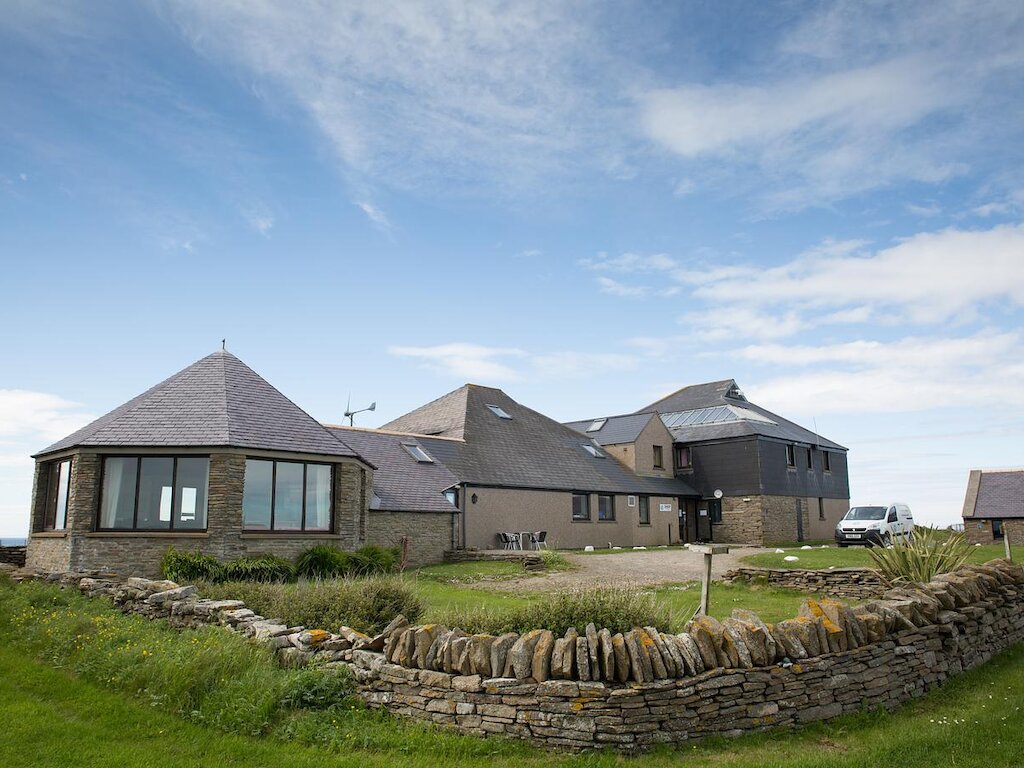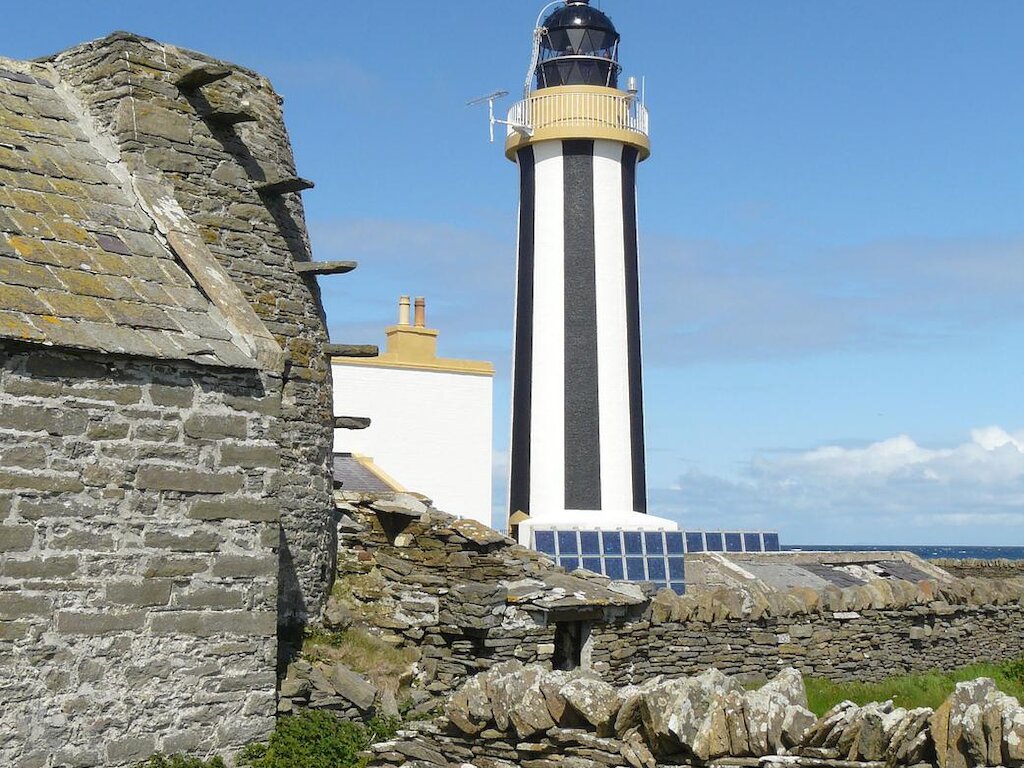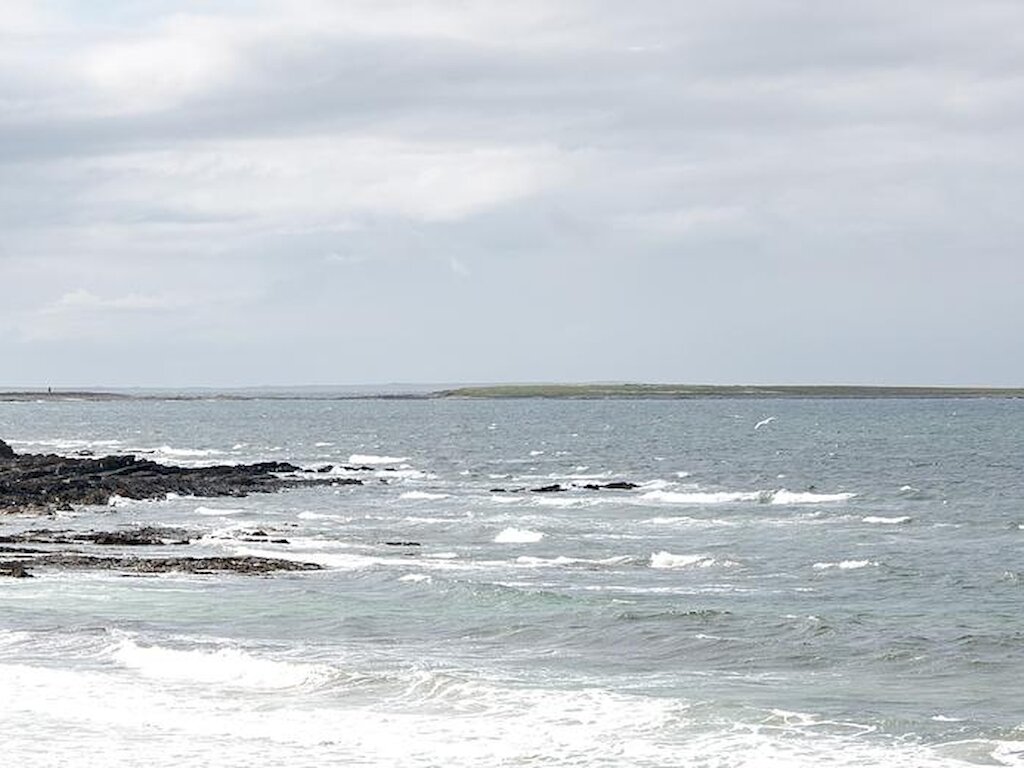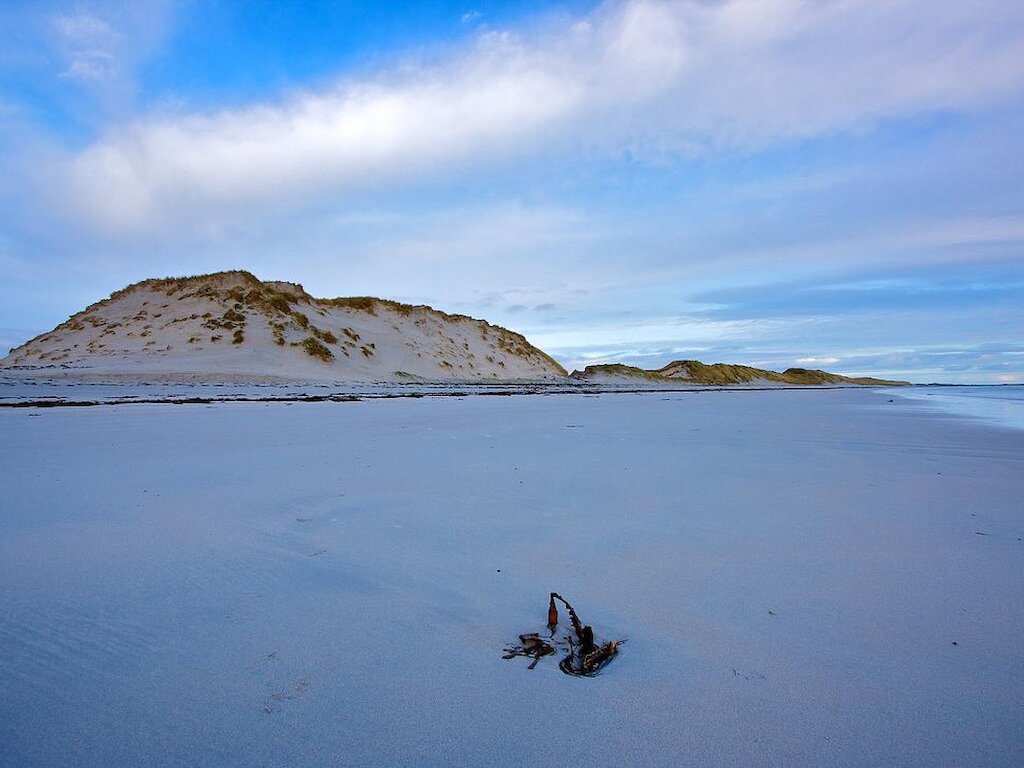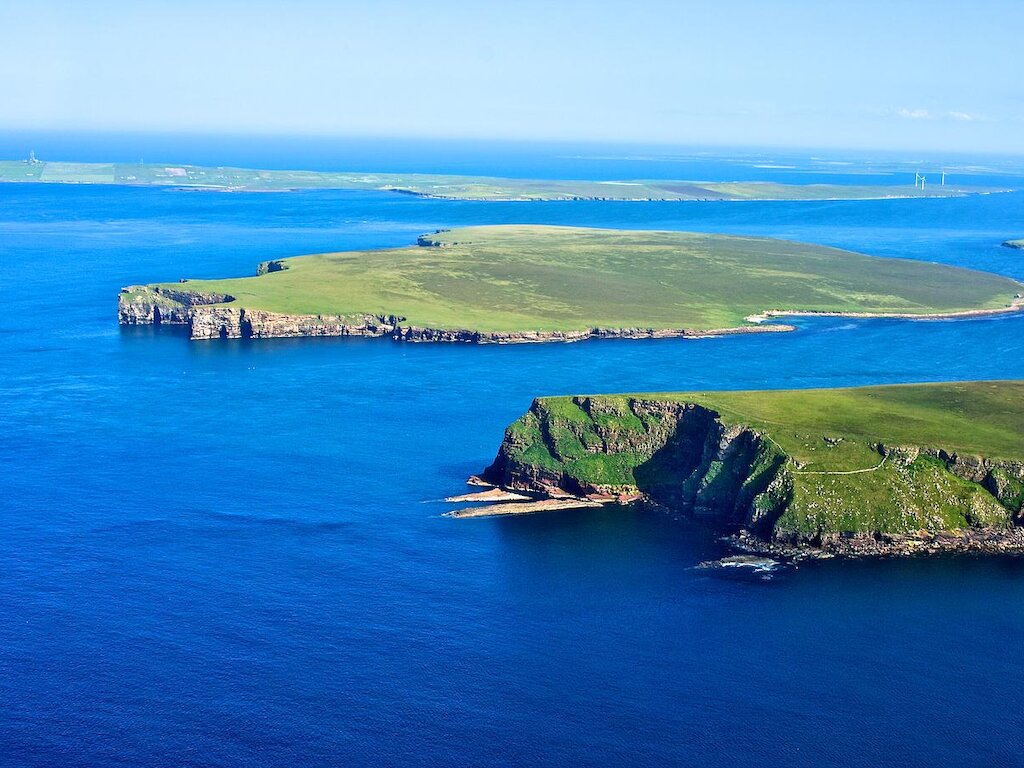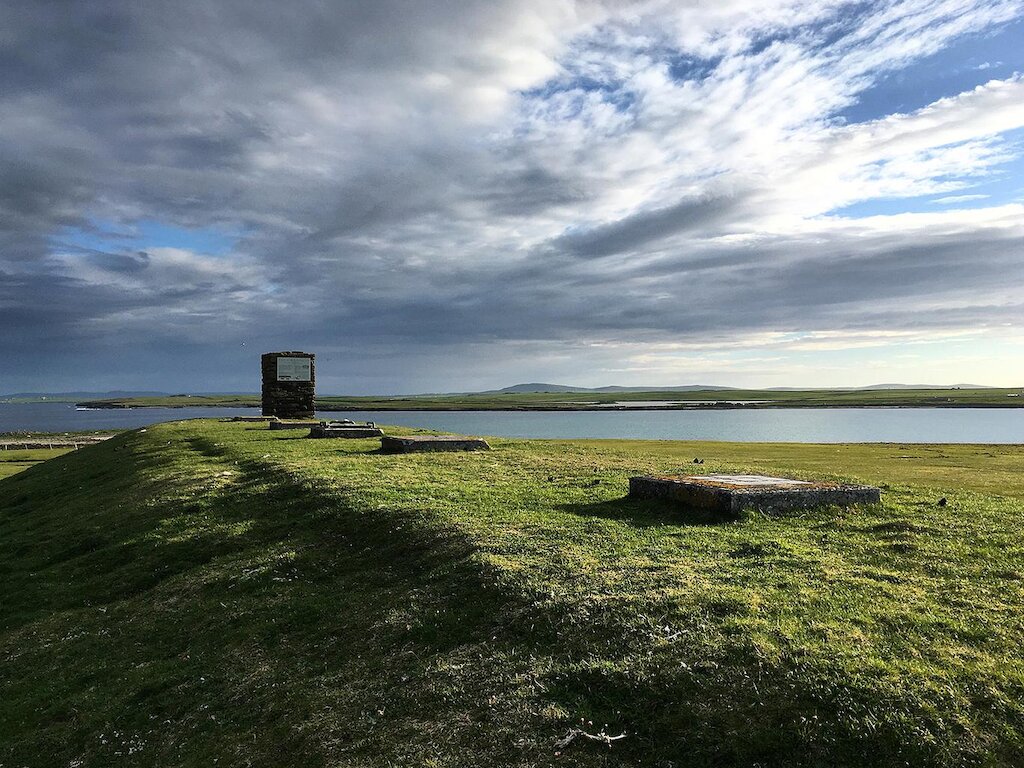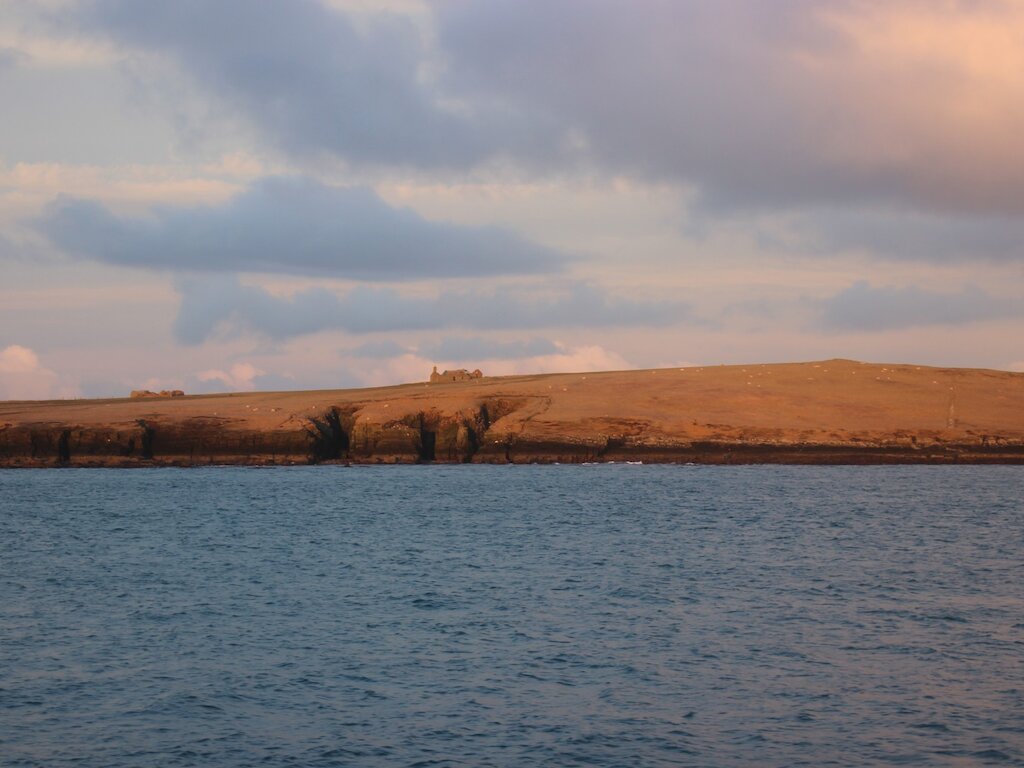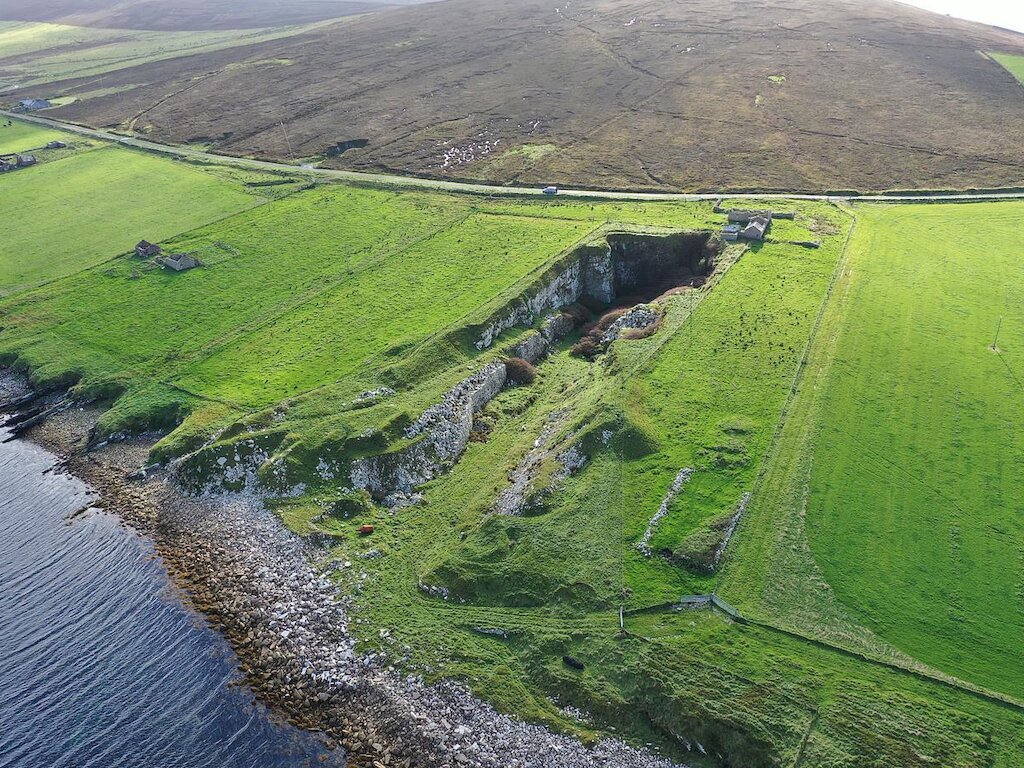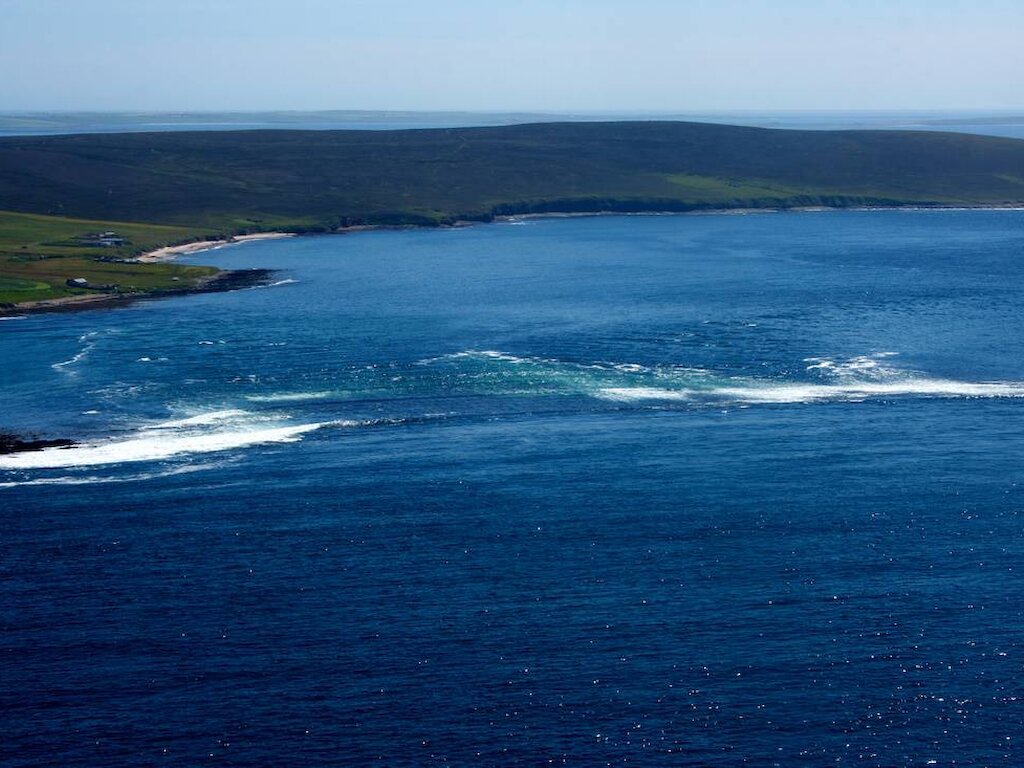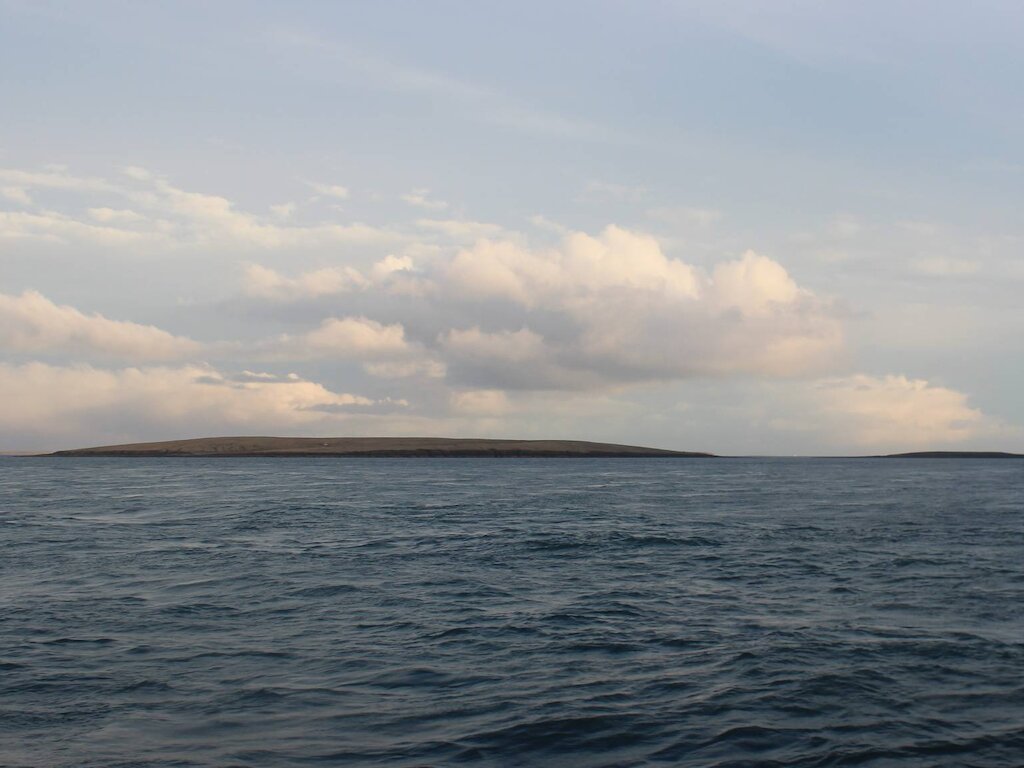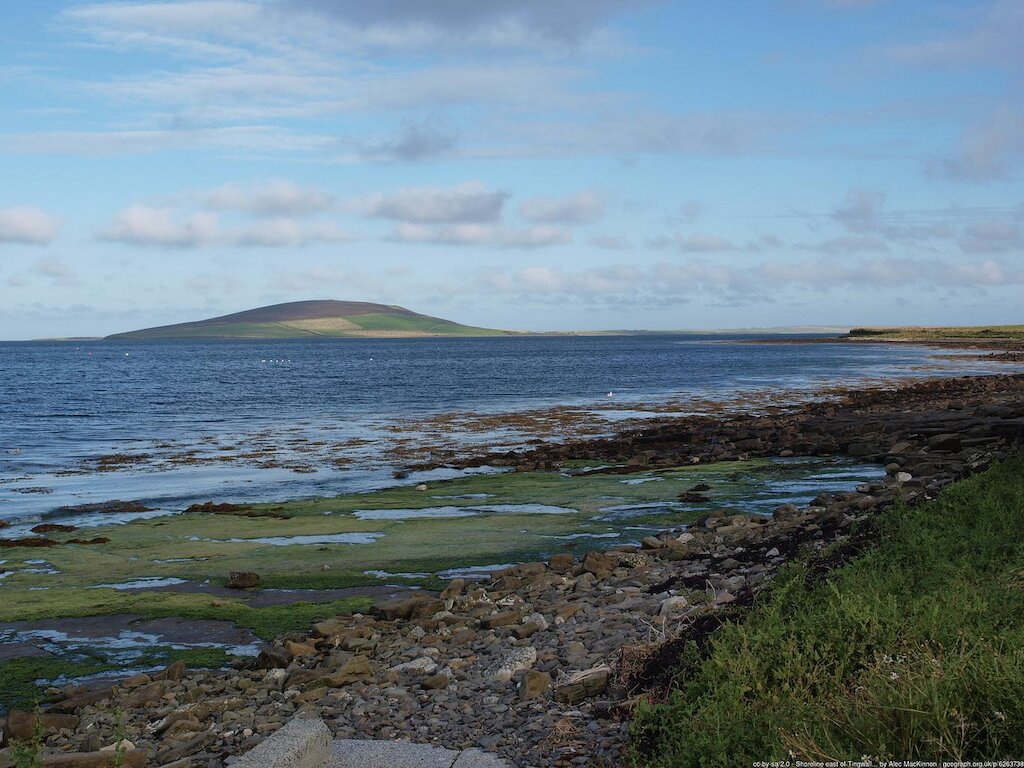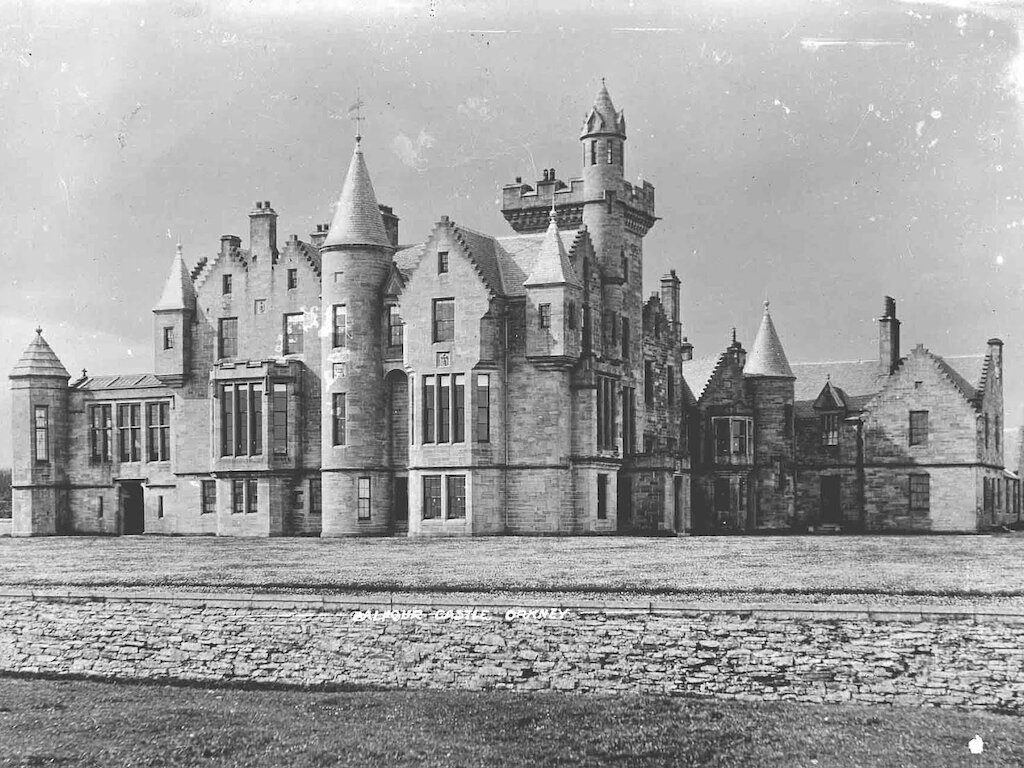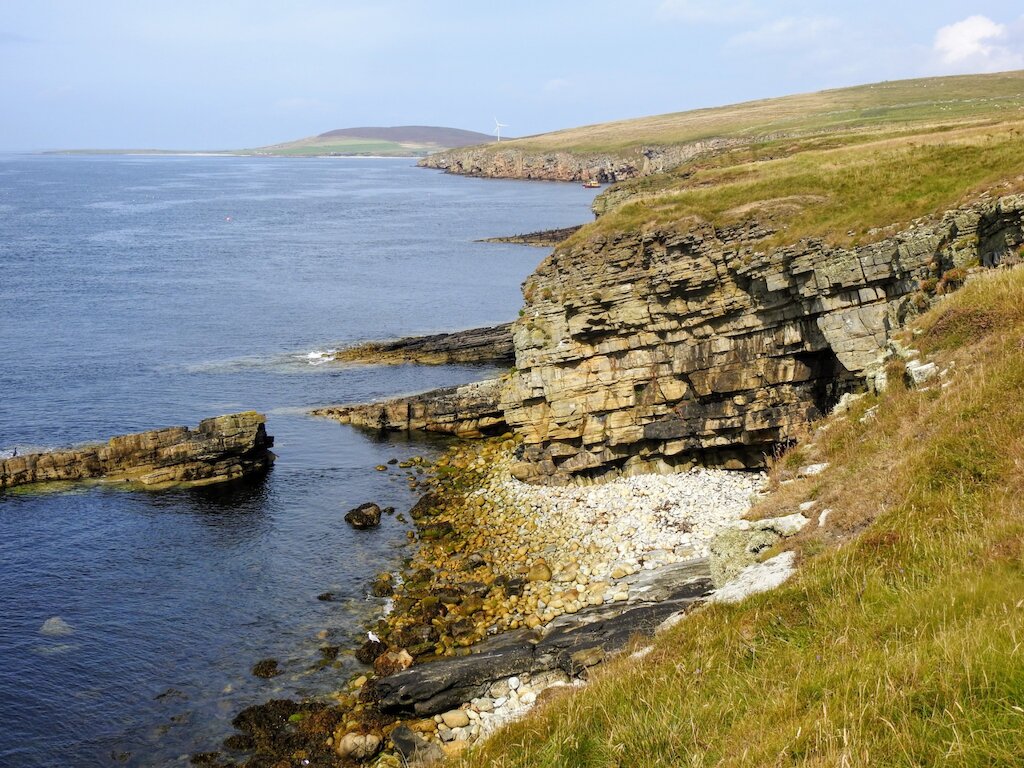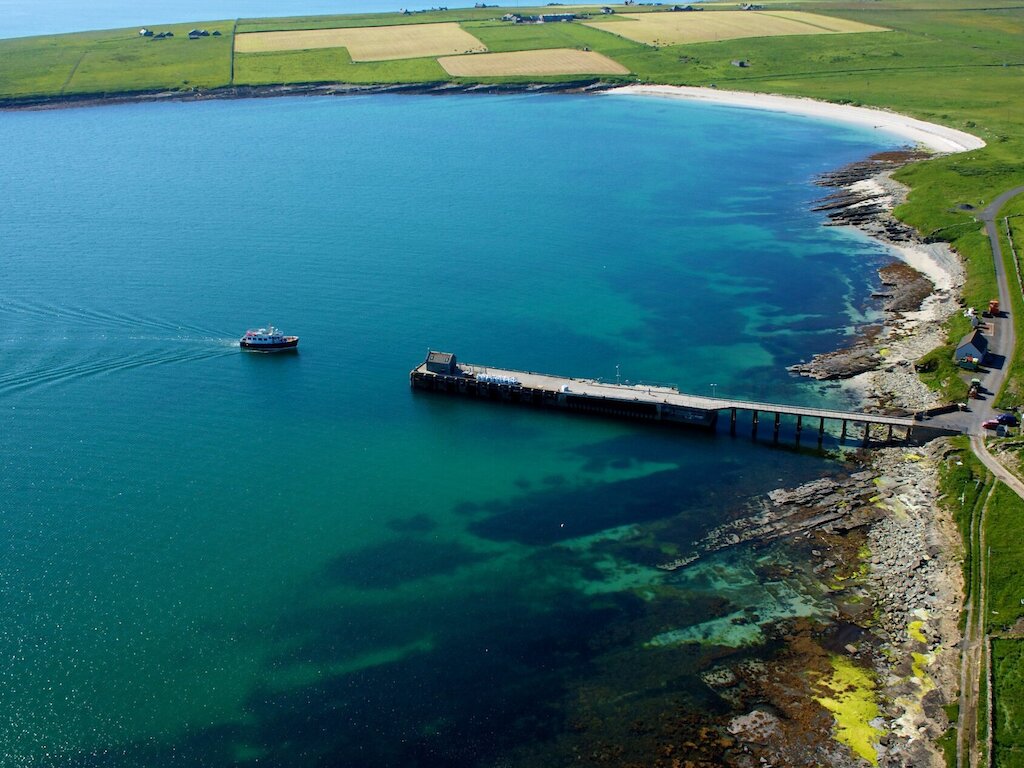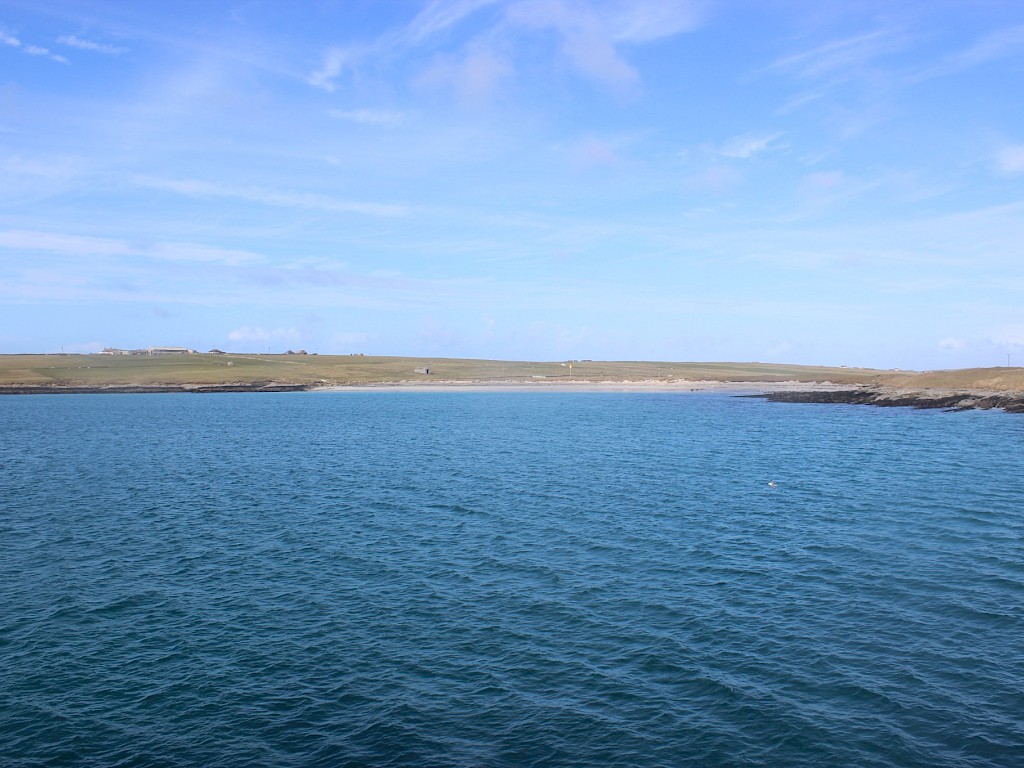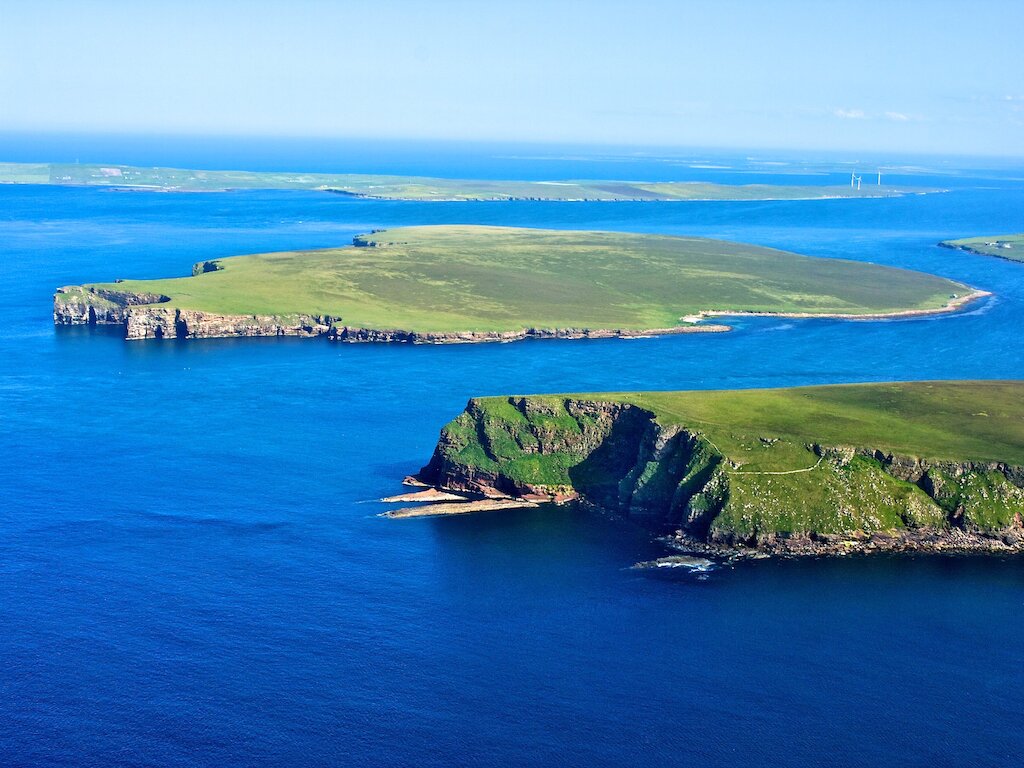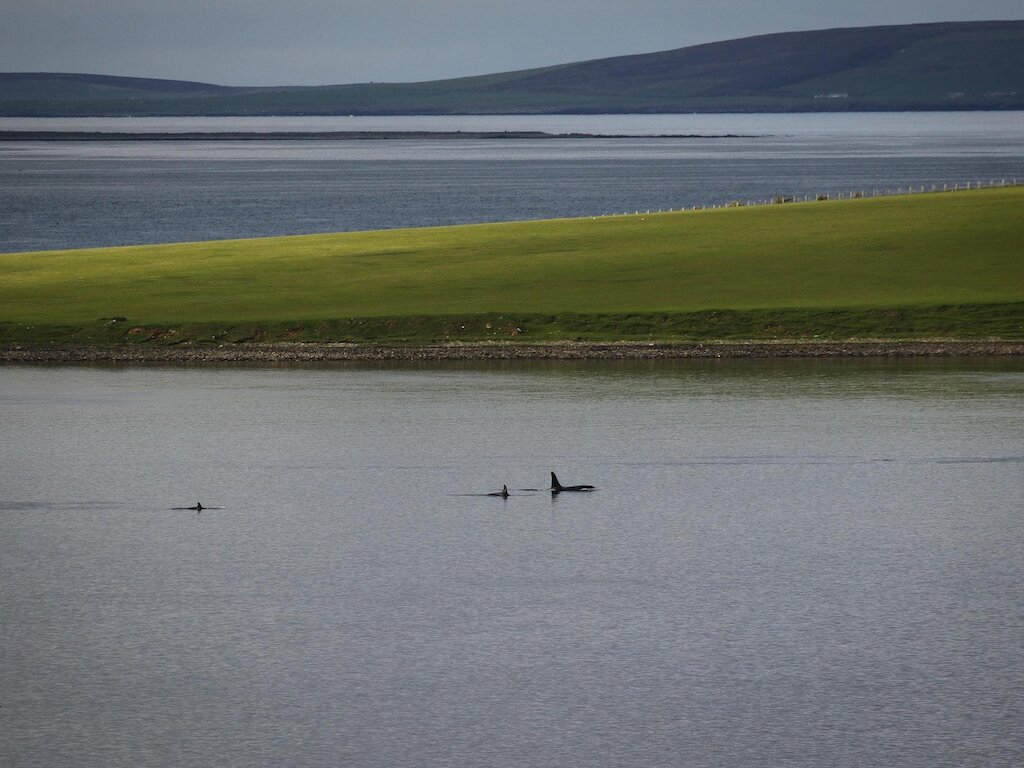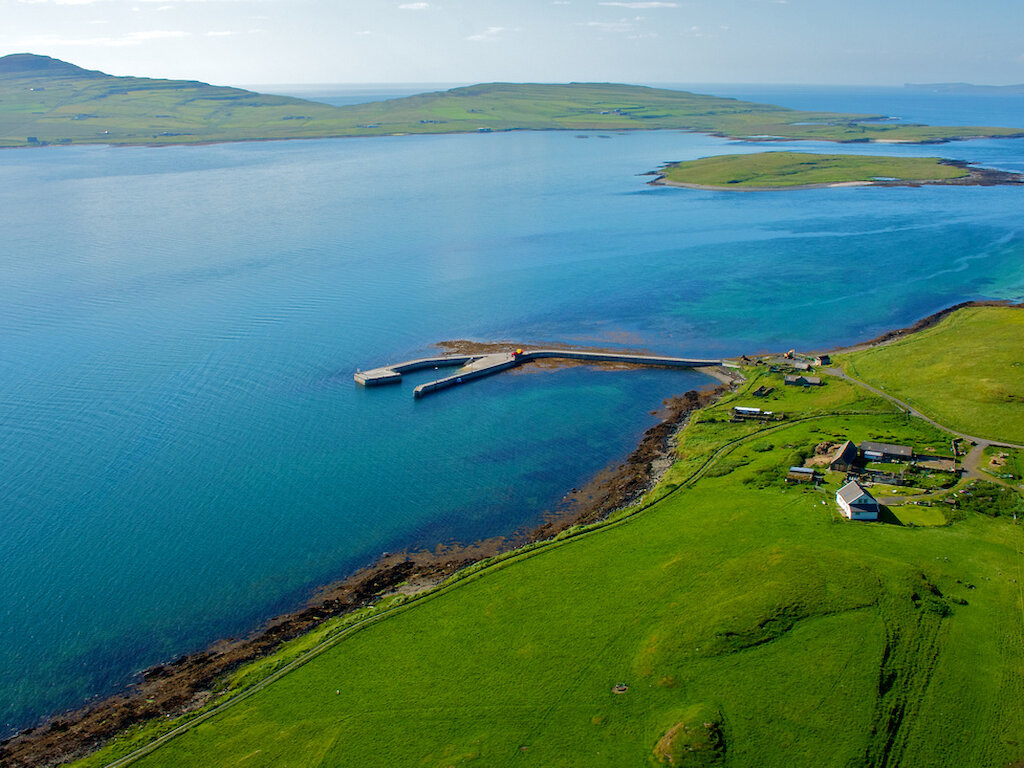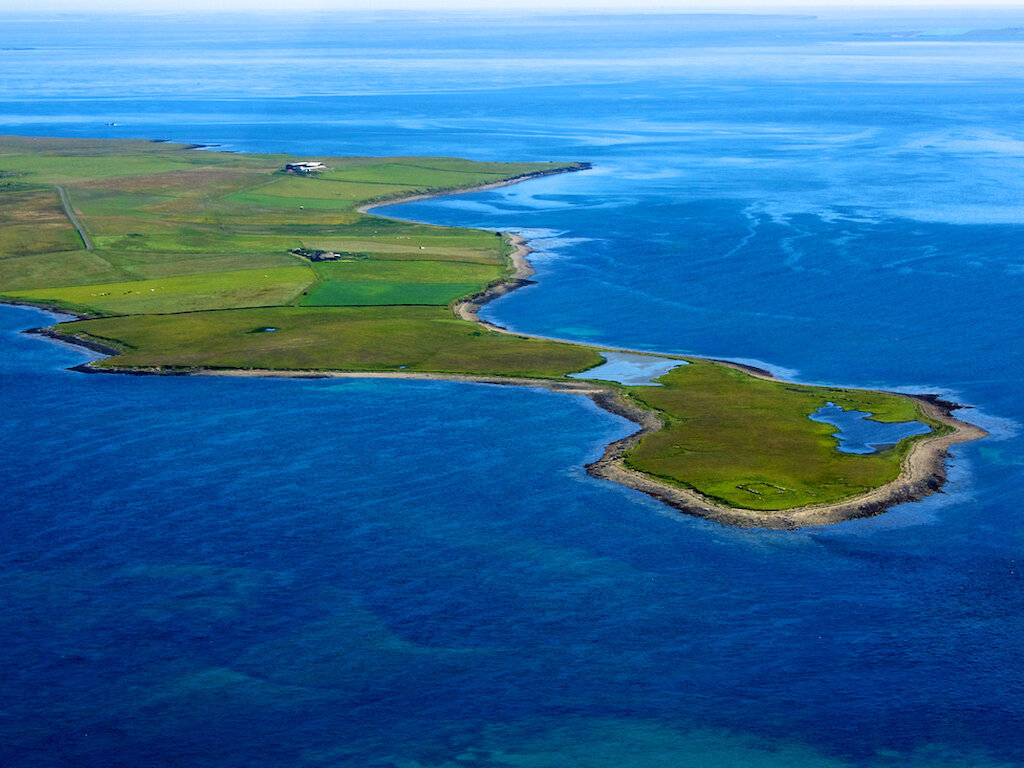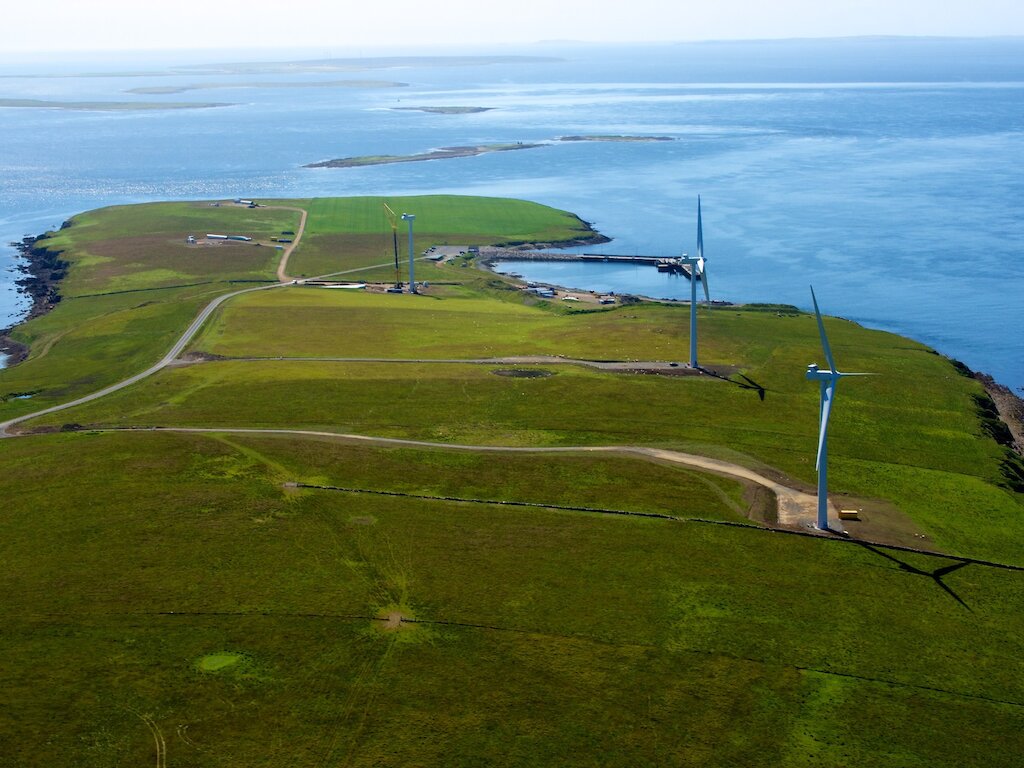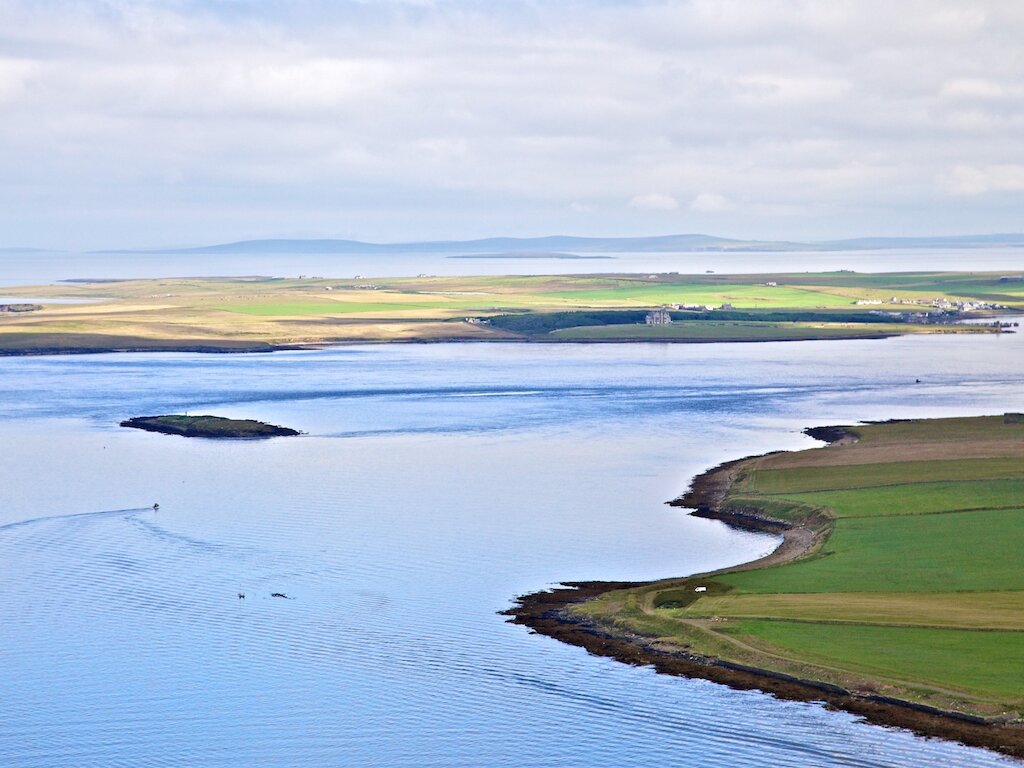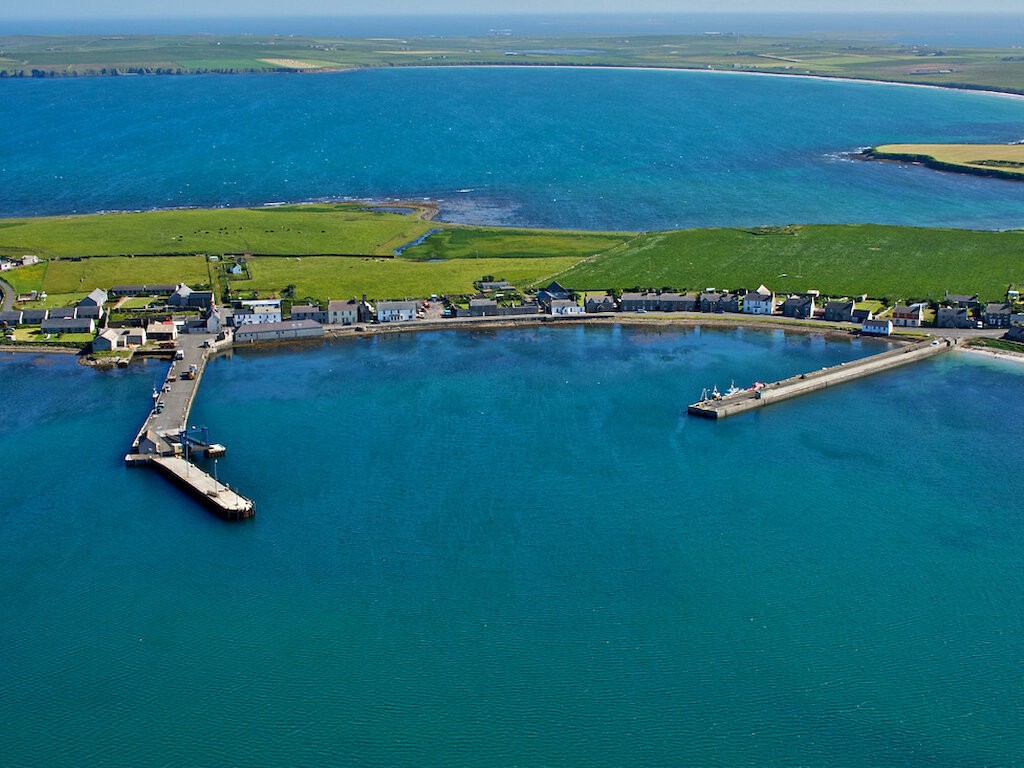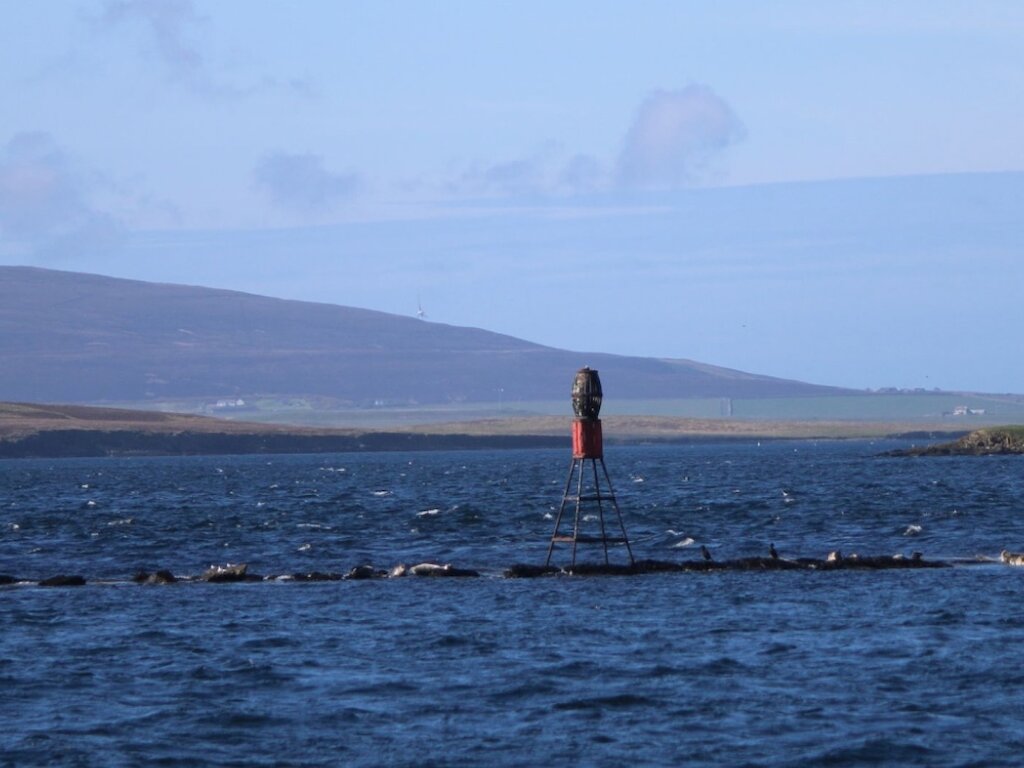It can be seen today as a low mound but still contains 4.5m thick walls, some of which stand to 3m high. North Ronaldsay’s Laird William Traill enlisted the help of Sir Henry Dryden to excavate the broch and they recovered many artefacts, which Traill then donated to the present-day National Museum of Scotland. They include a Pictish cross slab with an Ogham inscription - Ogham was an early form of writing in Scotland. There is also an iron church bell and some decorated pebbles, which are all unusual discoveries. Today the site is at risk of coastal erosion. If you look northeast from the pier you can see the grand house of Holland, with its castellated parapet, which was William Traill’s residence.
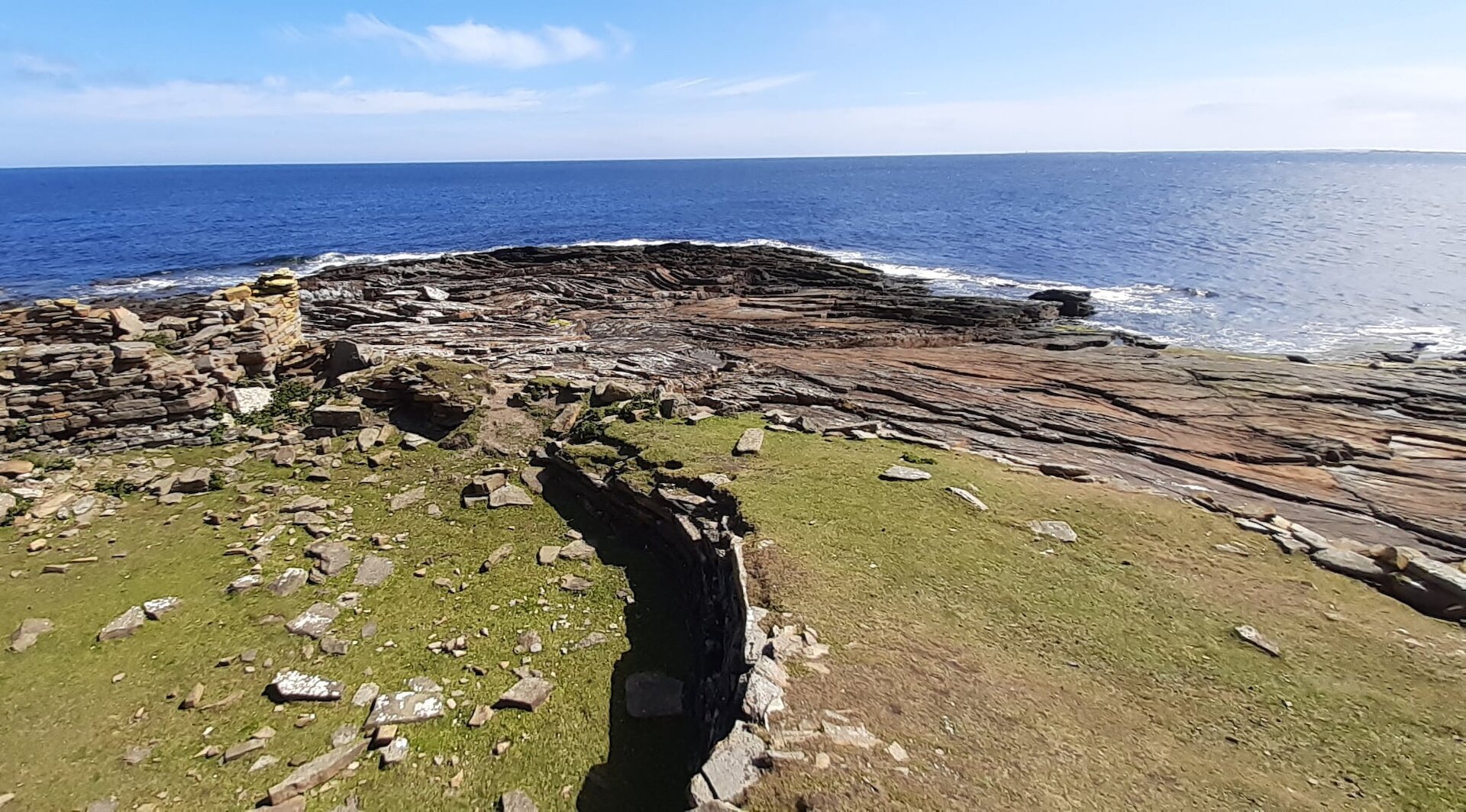
Broch of Burrian
At the opposite end of the bay from the pier is a promontory where an Iron Age broch tower stands.
